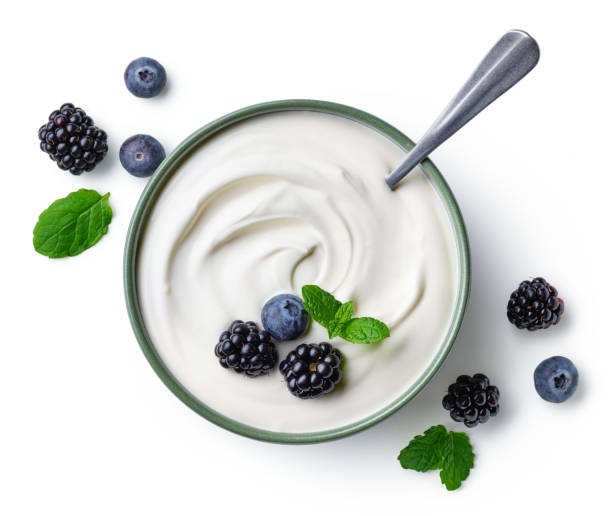Homemade Yogurt – Creamy, Healthy, and Surprisingly Simple
Yogurt is a staple in many households, loved for its creamy texture, tangy flavor, and versatility in both sweet and savory dishes. While it’s easy to pick up a container from the store, making your own yogurt at home is simpler than you might think. With just two ingredients—milk and a starter culture—you can create delicious, fresh yogurt that’s healthier, cheaper, and customizable. Whether you enjoy it plain, sweetened, or with added fruits and flavors, homemade yogurt is a delightful addition to your culinary repertoire.
Why Make Yogurt at Home?
Homemade yogurt is not only fresher and tastier than store-bought versions, but it also allows you to control the ingredients. You can adjust the sweetness, consistency, and flavor to suit your preferences. Plus, homemade yogurt is free from the additives, stabilizers, and excess sugars often found in commercial products. It’s a fantastic way to enjoy the probiotic benefits of yogurt, as you can ensure that your yogurt is rich in live cultures that support gut health.
The Science of Yogurt Making
Yogurt is made through the fermentation of milk by beneficial bacteria. The process starts by heating the milk to a specific temperature to kill any unwanted bacteria and then cooling it down to a temperature where the yogurt cultures can thrive. The starter culture, which contains live bacteria like Lactobacillus bulgaricus and Streptococcus thermophilus, is then added to the milk. These bacteria ferment the lactose (milk sugar) into lactic acid, which thickens the milk and gives yogurt its characteristic tangy flavor.
Ingredients and Tools:
- Ingredients: Milk and a starter culture (or a small amount of store-bought yogurt with live cultures).
- Equipment: Heavy-bottomed pot, thermometer, whisk, and a warm place for incubation (like an oven with the light on or a yogurt maker).
Recipe: Homemade Yogurt
- Yield: About 4 cups
- Serving Size: 1 cup
- Approximate Nutritional Values per Serving:
- Calories: 150 kcal
- Total Fat: 8 g
- Saturated Fat: 5 g
- Trans Fat: 0 g
- Cholesterol: 30 mg
- Sodium: 120 mg
- Total Carbohydrates: 12 g
- Dietary Fiber: 0 g
- Sugars: 12 g
- Protein: 8 g
Ingredients:
- 1 quart whole milk (you can use 2% or skim, but whole milk produces creamier yogurt)
- 2 tablespoons plain yogurt with live cultures (store-bought or from a previous batch)
Instructions:
- Heat the Milk: Pour the milk into a heavy-bottomed pot. Heat it over medium heat, stirring occasionally, until it reaches 180°F (82°C). This step helps to denature the proteins in the milk, resulting in a thicker yogurt.
- Cool the Milk: Remove the pot from the heat and let the milk cool to around 110°F (43°C). You can speed up this process by placing the pot in a bowl of ice water. This is the ideal temperature for the yogurt cultures to thrive.
- Add the Starter: In a small bowl, mix a few tablespoons of the cooled milk with the yogurt starter. Whisk this mixture back into the pot of milk, ensuring it’s well combined.
- Incubate the Yogurt: Pour the milk mixture into jars or a yogurt maker. Keep the yogurt warm, ideally between 100-110°F, for 6-12 hours.

- The longer it incubates, the tangier and thicker it will become. You can use an oven with the light on, a slow cooker set to warm, or a dedicated yogurt maker.
- Chill and Set: Once the yogurt has thickened to your liking, transfer it to the refrigerator to chill for at least 2 hours before serving. This will help it set and develop its flavor.
- Enjoy or Flavor: Enjoy your homemade yogurt plain, or add honey, fresh fruits, vanilla, or granola for extra flavor and texture.
Tips for Perfect Homemade Yogurt:
- Use Fresh Milk: The fresher the milk, the better your yogurt will taste.
- Sterilize Everything: Clean utensils and containers ensure that only the desired bacteria will grow.
- Experiment with Time: Incubating for longer periods results in tangier yogurt. Start tasting around 6 hours and let it go longer if you prefer a stronger flavor.
Flavor Variations for Yogurt:
- Vanilla Yogurt: Stir in a teaspoon of vanilla extract and a tablespoon of honey after the yogurt has set.
- Fruit on the Bottom: Spoon a layer of fruit preserves or compote into the bottom of your jars before adding the milk mixture for a fruity surprise.
- Greek Yogurt: Strain the yogurt through a cheesecloth for several hours to remove the whey, resulting in a thicker, creamier yogurt.

Creative Ways to Use Homemade Yogurt:
- Smoothies: Blend yogurt with fresh fruit and a splash of juice for a nutritious smoothie.
- Salad Dressings: Use yogurt as a base for creamy dressings by mixing it with herbs, garlic, and lemon juice.
- Frozen Yogurt: Freeze yogurt with honey and fruit for a healthier dessert.
Fun Fact:
Did you know that yogurt has been consumed for over 4,000 years? It is believed to have originated in Central Asia and was traditionally made by fermenting milk in animal skins. Today, it’s enjoyed worldwide in countless forms and flavors.



